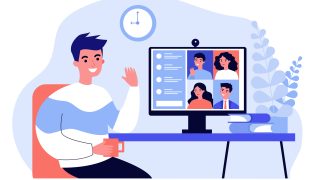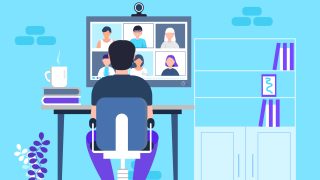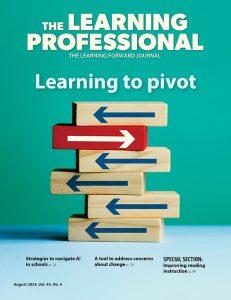Two studies released this summer found that between 15 million and 16.9 million children in the United States lack adequate home internet access. Let me repeat those numbers: 15 to 16.9 million. According to the study from Common Sense Media, this means that 30% of all public K-12 students fall into a phenomenon known as the homework gap. This term was coined to describe the inequities that exist when some students have access to high-speed internet access at home and others don’t. Those inequities have never had bigger consequences than they do today, with millions of students learning remotely due to the pandemic.
The homework gap disproportionately affects students from families of color and in low-income households. Common Sense found that 26% of Latinx students and 30% of Black students lacked high-speed internet access. An earlier study from the Pew Research Center (Anderson & Perrin, 2018) showed that among families earning less than $30,000 per year, one-third lacked high-speed internet access. The homework gap also has a geographical component: Common Sense’s study found 37% of rural students lacked adequate connectivity in their homes, a percentage far higher than among suburban (25%) and urban (21%) students.
It’s no secret that computers and high-speed internet have played an increasingly large role in student success over the past few decades. These resources are necessary for students to complete assignments, communicate with their teachers, manage their scheduling, and stay informed about academic requirements. Without current devices and high-speed internet access, some students are completely left behind.
The Covid-19 pandemic has escalated the need for access and exacerbated the inequities. As districts increasingly move to hybrid and virtual models for reopening this fall, the students who fall into the homework gap are left without a meaningful chance for success. If a school district opts for a fully virtual model or hybrid model, families without high-speed internet access will be unable to access instruction, even if schools provide laptops or tablets.
Many educators are falling into their own gap. Common Sense estimates that 8% of all teachers (between 300,000 and 400,000 teachers) lack an adequate internet connection for distance teaching. Of this group, one-third have no internet connection in their homes at all, and two-thirds subscribe only to cellular internet on an enabled device such as a smart phone. In addition to struggling to teach online, these teachers are missing opportunities to learn from their peers and those outside their districts about how to navigate this difficult time. Professional learning and connection have never been more important as the pandemic has thrust all teachers into teaching and learning environments for which no one was prepared.
How can we ensure a fair and equitable education for all students under these conditions? We must take urgent action to close the homework gap. We should start with these three steps:
- Demand that Congress and the Trump administration provide emergency funds to address the homework gap as they consider federal relief for the pandemic and as we move into appropriations this fall. This should not replace other education funding. We urgently need both funding for education stabilization and funding to close the digital divide.
Fortunately, the funding mechanism already exists to close the internet gap, in the form of the federal E-Rate program, a universal service program that provides discounts on broadband and Wi-Fi to connect K-12 public and private schools and public libraries to the internet. Congress and the Federal Communications Commission (FCC) must provide at least four to five billion dollars in emergency funding, delivered through the E-Rate program, to support home internet access and distance learning technology.
- Encourage school districts to prioritize providing computer devices and internet access for the students and teachers who fall into the homework gap. Districts are facing budget cuts but must find ways to connect with students. Some examples can be found in a recently released survey by the Southern Education Foundation. This survey of 48 school districts in 20 states found that 81% of the school districts surveyed are making access to Wi-Fi and technology a priority. In some cases, this has meant working with Internet provider companies to offer free or reduced WiFi access and in other districts it has included strategies such as putting hotspots on buses and sending them out into the community. That same study, though, notes that many of these districts still lack the resources to connect students in their homes.
- Share stories that demonstrate the reality of the homework gap. Statistics are important for making the case, but it’s the stories of individual students and families that really show the impact of the homework gap – and the benefits of closing it. If you are in a district or school and know of families that are victims of the homework gap, we want to hear from you. Please send your stories to melinda.george@learningforward.org. Learning Forward will use these stories in our communications with Congress as well as potentially highlighting them on upcoming webinars and in blogs and articles for our stakeholder community.
There are many aspects of navigating the pandemic that feel out of our control. But we can close the homework gap, and quickly, if we take the right steps and make the necessary investments. In a technologically rich country, no student should be unable to receive an education because of a lack of technology.
Melinda George (Melinda.george@learningforward) is Chief Policy Officer at Learning Forward.
References:
Anderson, M. & Perrin, A. (2018, October 26). Nearly one-in-five teens can’t always finish their homework because of the digital divide. Pew Research Center. www.pewresearch.org/fact-tank/2018/10/26/nearly-one-in-five-teens-cant-always-finish-their-homework-because-of-the-digital-divide/
Chandra, S., Chang, A., Day, L., Fazlullah, A., Liu, J., et al. (2020). Closing the K–12 Digital Divide in the Age of Distance Learning. Common Sense Media and Boston Consulting Group. www.commonsensemedia.org/sites/default/files/uploads/pdfs/common_sense_media_report_final_7_1_3pm_web.pdf
Alliance for Excellent Education, National Indian Education Association, National Urban League, and UnidosUS. (2020). Students of Color Caught in the Homework Gap. Author. https://futureready.org/wp-content/uploads/2020/08/HomeworkGap_FINAL8.06.2020.pdf
Tinubu Ali, T., Cherukumilli, S. & Herrera, M. (2020). Distance Learning Equity Dashboard. Southern Education Foundation. https://www.southerneducation.org/dled/







